shopping_cart
Cart
It is a technique that is used for a multitude of product, mostly for customized bags and backpacks.
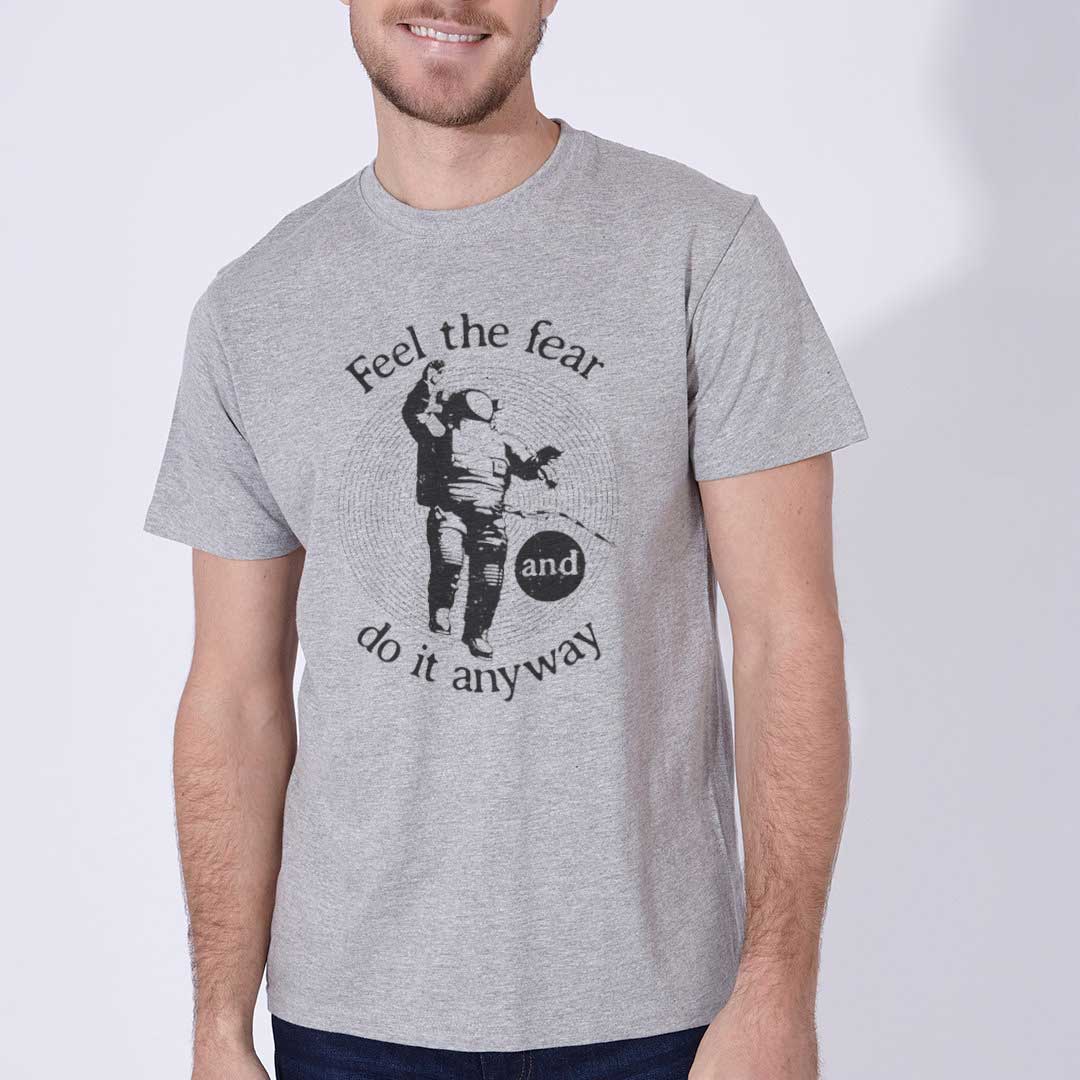
Circular screen printing is a manual printing technique, that, like the name suggests, is used for circular products. For printing, a specialised machine is used which means any circular object can be printed on. The machine´s screen moves as the article rotates, transferring the design without any deformation.
The product is placed in the holder and the screen is pushed so that it will rotate the holder of the object, the ink is then transferred to the product.
The results of this process on circular products such as bottles of water and engraved pens are very good quality and have a fantastic finish.

Tampography is a very economic technique, is long lasting and has a fantastic definition. It is a system of branding which is carried out through the transferring of ink to the product using a silicon or rubber buffer. The process consists in covering a metal or plastic plate in a photosensitive emulsion, where the image is printed through a chemical process, creating a rotogravure. This plate is covered in ink and swept by a blade, prior to this, a silicon buffer is pressed against the engraving on the plate picking up the colour of the ink from the rotogravure and passing it onto the pieces that is to be printed on through contact.
One of the greatest utilities of tampography is the fantastic definition that is given and the speed at which the inks dry, this means that various colours can be transferred consecutively. It is ideal for high quantity orders.
On the other hand, this technique does not take as well to metal products, therefore for these materials, laser techniques are recommended.
Thanks to the properties of the silicone pads, an image can be transferred onto concave, cylindrical and irregular surfaces. In addition, it is ideal for printing on small parts as better quality is achieved on small details. The technique ensures that the the print is as close to the original design as possible, it is also extremely long lasting.
This is one of the techniques that we most recommend to our clients, especially for small products such as publicity pens, customized lighters or promotional keyrings.
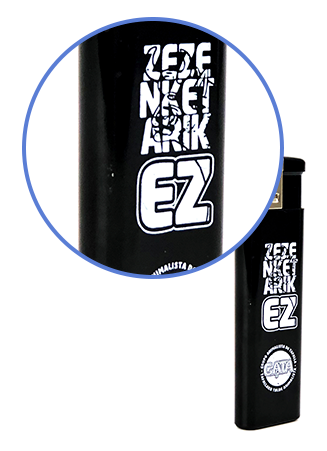
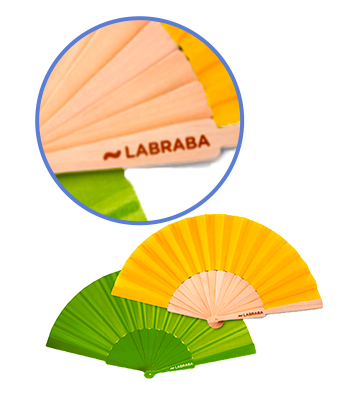
Laser engraving is a technique that does not required contact with the product to be able print, something that saves a lot of time. It is used on materials such as: wood, metal, leather, glass and rubber.
The technology allows the printing to be carried out with maximum precision. This is a technique that we recommend to our clients when they are looking to give their products an exclusive, elegant and quality look.
During the process, the product is eroded. To start, the product is prepared in boxes and cleaned, the product is then fixed so that it does not move, then finally, the product is put into the laser machine. With this technique, you can not print colours onto the product. The colours that appear are what appears once the first layer of the object is taken away.
Customized products are produced with a very professional print that is almost unerasable. We often see this technique used in products made out of aluminium such as external batteries for phones, engraved keyrings, metal pens or customized pendrives.In recent years it has started to be used for promotional mugs, very good results are obtained.

Sublimation is a printing technique ideal for sportswear, including breathable T-Shirts, as it does not cover the pores of the fabric that allow for perspiration, it can also be applied to products such as advertising cups.
The process consists in transferring the design print onto a special paper and then onto a product. Heat is applied through a hot iron. The heat acts as a catalyst for the process of sublimation.
With this technique, the printing doesn't require contact and is still breathable, allowing the design to be displayed on the product but without the sensation of having a sticker attached. Additionally, the quality of the design is optimal and the print loses less quality over time.
This method offers possibilities for different textiles and is perfect for printing with lots of colours or for printing on photographs.
This technique is perfect for fully sublimating your product or for large surfaces, it is highly recommended that the background is white so that the colour adapts to the maximum.

Embroidery is a textile customization technique in which the design to be made is digitised with a perforation design software, the machine then reads the pattern and moves its needles automatically to define the programmed design. It is used for all types of textile garments, although, it is most commonly used for dress shirts, short-sleeved polo shirts, beach or swim towels and customized caps.
We recommend this technique to our customers when they choose a high quality product and are looking for a customization technique that suits the product.
This technique offers high quality finishes and adds a distinctive touch to the final product. Furthermore, It is very durable.
On the other hand, the price can vary depending upon the density of the logo and the quantity of thread used, the price does not take into consideration the quantity of colours used.

Digital transfer is a technique that prints directly onto the product. The image is printed in vinyl format and is attached to the garment to be customized through heat application. When the vinyl comes into contact with the heat of the iron, it attaches to the garment.
It is is a customization technique that is usually used for logos of many colours as a result of the printing technique providing optimal photographic quality. It is used above all for textile items such as customized basic white shirts and sweatshirts.
It is a technique used for many items, above all, for customized bags and backpacks.

Serigraphic Transfer is cheaper than digital transfer, since the logos is printed on a serigraphy sheet (which allows between 1 and 8 colours) and following that it is transferred to the product.
This technique combines the technique of serigraphy and transfer. It is a method whose final result is similar to serigraphy with the difference being that the ink is not printed directly onto the fabric but instead on to a silicone paper, which is then transferred to the garment by of a thermal iron.
The contours are impeccable, since the transfer does not require cutting, only the ink is transferred.
This customization method offers a high resistance to washing and is widely used for delicate items such as umbrellas. Furthermore, it is highly elastic. this prevents the print from cracking. It is used in multiple products, both in light and dark fabrics.
We usually use this technique for touch-screen wool gloves, suitcases and waterproof jacks, among other items.
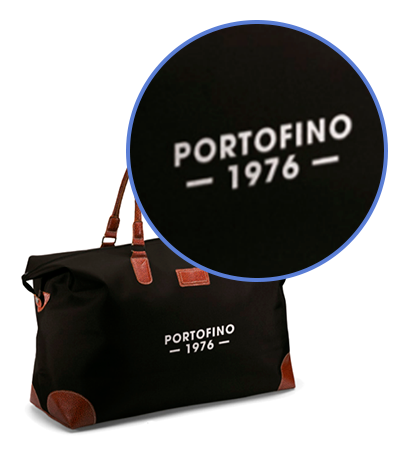
Ceramic Transfer is a high quality printing method for materials such as glass, ceramics and porcelain.
Using this printing technique, the logo is stamped on a decal and attached to the item, it is then baked in special ovens at temperature of about 800 degrees celsius.
It is a method that we use for glass jars, ceramic dishes and above all for customized cups. One of the great advantages is that withstands dishwasher and microwave use without affecting the printing of the product, which will hardly suffer wear.

The resin drop is a customization technique that consists in the application of a polyurethane resin of a base with a PVC sticker, which after drying becomes a transparent 3D layer. This offers a resistant coating that protects the image on which it is applied, preventing it from being erased.
It is a method that offers a very striking, elegant and quality product which is sure to not go unnoticed. Its plastic layer offers rigidity, thickness and brightness, generating a very aesthetic 3D effect.
It is used in small products such as publicity keyrings and customized badges to which the sticker is attached with the adhesive resin.
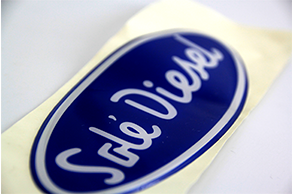
Thermosetting is a thermal printing technique in which a metal die with the shape of the design is to be stamped is used. It is printed by means of heat and pressure on the item, producing a relied with the shape of the design.
This system is used in modifiable materials such as leather, fabric, cardboard, wood and plastic, among others. This technique offers very good results for products such as customized diaries or publicity notebooks.
We like to recommend this technique when our customers purchase products such as leather wallets. On these occasions, many customers want their logo to be present but in a tenuous and elegant way, and position their brand in a subtle way. With its high quality finish, the products range of uses, its durability and its resistance to washes can be emphasized.
Digital UV printing is a printing method based on the use of special inks, which dry when exposed to ultraviolet light produced by the print heads. Thus, the ink is perfectly adhered to the object, getting a durable and dry print instantly.
It is a technique that allows printing in a wide variety of colors. On the other hand, if you want to print on transparent objects the printer can be configured to use white ink and thus obtain a visible result.
Thanks to its fast drying and low ink absorption of the object the printed images are very sharp, as the ink remains on the outer surface of the product.
It is an economical printing method as a result of its low production costs and fast processing times due to its instant drying.
We see it applied to a multitude of materials, including plastic and rubber, glass and acrylics. wood or aluminium, as well as other metals.
It is a unique and innovative technique that attracts a lot of attention for its use of sustainable inks. This is because these inks do not emit volatile chemicals. They do not product ozone and they do not contain mercury or lead.
The result is a print on the object of the highest quality and durability, resistant to water and scratches that does not lose colour.
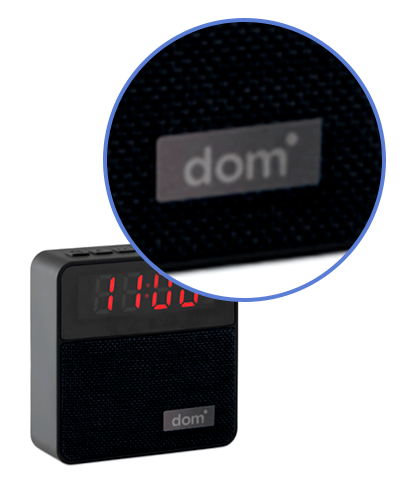
The digital label is made by means of a printing plotter and on a self-adhesive article in which the logo is printed. You must first indicate the cutting line to the computer using a computer programme. The shape must be simple and geometric. Once the labels have been printed and cut, they can be stuck to the product in the desire position.
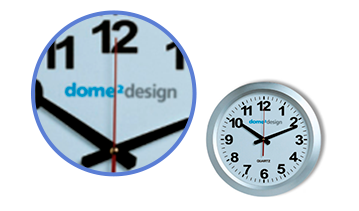

Serigraphy is the most well known technique of brand printing and is used by a wide range of companies. It is a very economical method, ideal for large orders.
For smaller orders it is recommended to use other techniques, such as the use of a laser, because of the high fixed cost of the iron used, this is what would make the production of smaller quantities more expensive.
The process involves transferring the ink through a stretched mesh in the design of the logo, it is stamped colour by colour. After this, it is transferred to the drying machine.
It is a technique that is used for a multitude of product, mostly for customized bags and backpacks.
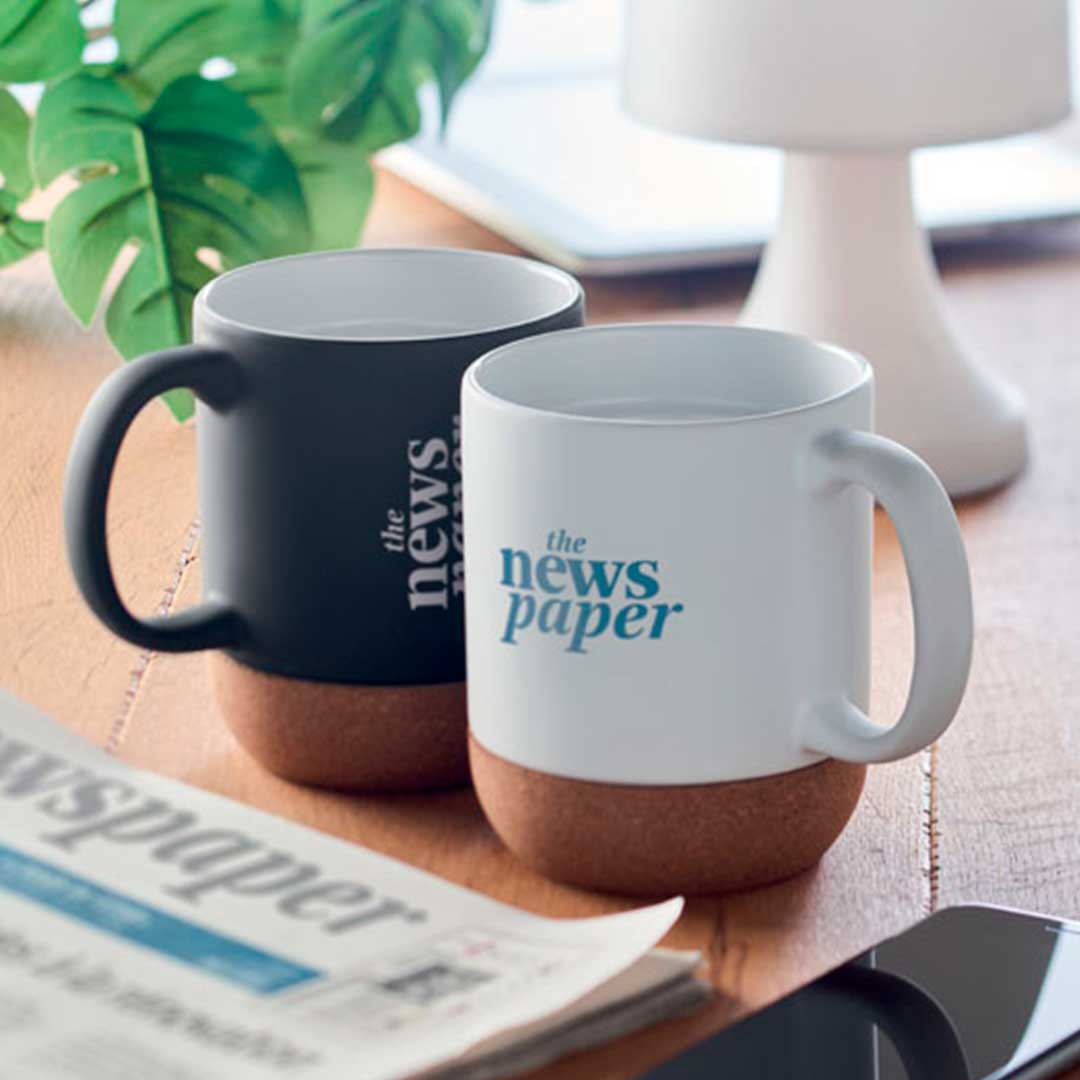
Circular screen printing is a manual printing technique, that, like the name suggests, is used for circular products.
For printing, a specialised machine is used which means any circular object can be printed on. The machine´s screen moves as the article rotates, transferring the design without any deformation.
The product is placed in the holder and the screen is pushed so that it will rotate the holder of the object, the ink is then transferred to the product.
The results of this process on circular products such as bottles of water and engraved pens are very good quality and have a fantastic finish.
